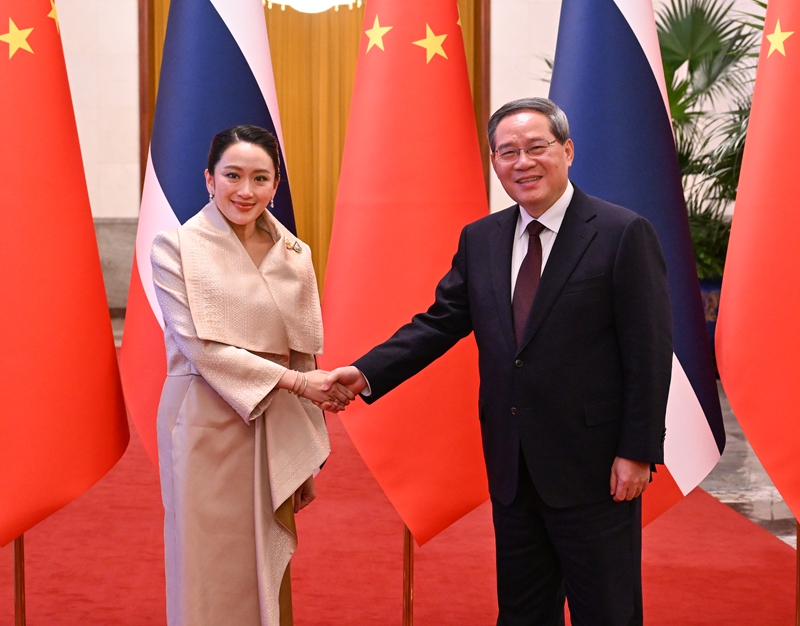Looking At The Changes Of The Century-old Port From The National Gates, Horgos Has Achieved A "new Speed" Of Opening Up To The Outside World
Looking At The Changes Of The Century-old Port From The National Gates, Horgos Has Achieved A "new Speed" Of Opening Up To The Outside World
The national gate is the boundary mark of national sovereignty and the gate of openness. Horgos, from an important inn on the North Silk Road to an important window opening to the west, the national gate here witnessed the transformation of this small border town into an important port connecting the inside and outside. Let's follow the reporter of the Taiwan Channel today
Horgos is located in the western border of China, bordering Kazakhstan. It inherits the five Central Asian countries in the west and the inland provinces and cities in the east. It has been the throat of the northern Silk Road since ancient times. Nowadays, this place has become the most eye-catching business card for China to open westward. If you give Horgos' growth a collection, the most eye-catching one is the six photos of the national gate here. Today, let us open this album, follow the country's gates, and witness the city's development trajectory along the way.
General Station reporter Song Wenjin: In 1952, in order to strengthen port management, Horgos built the first generation of national gates, a row of bungalows built with red bricks. Although there were few commercial activities and personnel exchanges at that time, the red five-pointed star on the eaves demonstrated the confidence and hope of the New China.
The first generation of national gates stands here, guarding the motherland. More than 30 years later, with the official reopening of Horgos, the first generation of national gates also ushered in a new mission of opening up to the outside world.
In 1986, the national gate was upgraded, renovated and expanded to 894 square meters, and the road where goods were cleared in front of the door became lively.
In 1991, the third generation of national gates was launched, and the area was more than twice as large as the previous generation. A year later, Horgos established border trade, becoming the largest inland border trade market in the country at that time. In the past few years, the transaction volume of border traders increased rapidly from 27.5 million yuan in 1992 to more than 500 million yuan in 1998, with a cumulative transaction volume exceeding 1.9 billion yuan, and the economic development of the port has made rapid progress.
In order to adapt to the rapidly growing demand for goods, the fourth-generation national gate was officially launched in 1996. On both sides of it are the entrance and exit passenger inspection halls, and in the middle are the entrance and exit cargo vehicle passages, which is the national gate of a generation of open pattern.
Since 2000, with the transformation of trade and transportation from border trading to import and export of bulk materials, in 2008, the fifth generation of the national border was born after further expansion and upgrading.
In 2013, the initiative to jointly build the "Belt and Road" proposed that Horgos ushered in earth-shaking changes and became a frontier window for China to open up to the west.
Buyinbatu Saarna, director of the freight workshop of Horgos Station: On March 19, 2016, Horgos launched the first China-Europe freight train, marking that the major channel from Horgos to Asia and Europe has been officially opened.
Taiwan reporter Song Wenjin: On September 27, 2018, the sixth generation of national borders rose to the ground and became the most eye-catching new landmark in Horgos.
On the same day, the "Shuangxi Highway" of the major transportation artery across the Eurasian continent was fully connected. The port customs clearance efficiency is getting higher and higher year by year, and the freight channel is getting smoother and smoother.
Yu Chengzhong, Chairman of Horgos Jinyi International Trade (Group) Co., Ltd.: We used to be in the fourth generation of national borders, and it took two to three days to leave and enter the country, but now it takes 6 hours. With the increasing efforts to open up to the outside world, especially after the opening of the sixth generation of national gates, we are now gradually increasing every year, from 5 vehicles to 300 vehicles leaving the country every day.
According to statistics, since 2018, the inbound and outbound vehicles at the port have jumped from more than 6,000 to 420,000, an increase of nearly 70 times; the import and export freight volume has increased from 36.731 million tons to 45.566 million tons, ranking first in Xinjiang for seven consecutive years.
Taiwan reporter Song Wenjin: Walking a few hundred meters south from the sixth generation of national gates, we arrived at the Horgos Railway Port, which has now become the "golden channel" for international logistics and land transportation.
Since its launch, the annual traffic volume of trains at the Horgos Railway Port has increased rapidly from less than 400 trains in 2016 to 8,730 trains in 2024, and the volume of goods has also increased year by year.
Taiwan reporter Song Wenjin: I am now connecting the China-Kazakhstan, one side is China and the other side is Kazakhstan. This is the China-Karabakh Horgos International Border Cooperation Center, covering an area of 5.6 square kilometers, and is my country's first cross-border trade cooperation zone. There are thousands of shops here, bringing nearly 10,000 kinds of goods from various countries, and now it has become a popular shopping check-in place on the border.
Dai Yanan, a police officer at the Horgos Entry and Exit Border Inspection Station: Here, passengers only need to hold a passport and other 5-type certificate to enter, without a visa, which is very convenient. Since the lockdown and operation in 2012, we have guaranteed a total of 50 million passengers to enter and exit the cooperation center for trade negotiations, cultural exchanges and some cross-border tourism activities.
From camel bells to whistles, from small border towns to today's modern cities, the national gates of Horgos are getting bigger and bigger, and the roads are getting wider and wider. In 2024, Horgos' total foreign trade import and export volume exceeded 100 billion for the first time.





